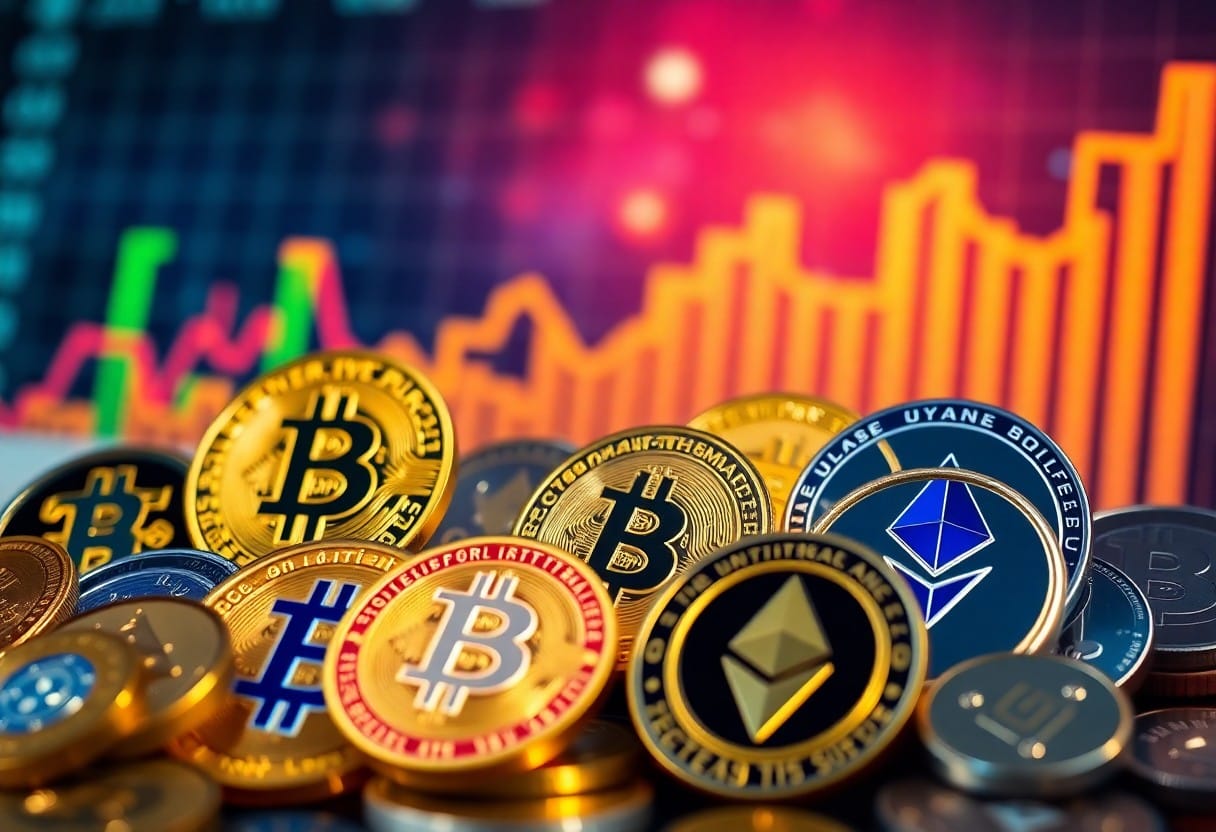One of the most curious topics in the investment world is the future course of gold prices. Every investor asks the question will gold prices fall and seeks answers to this question. Learning about economic fluctuations and market conditions by looking at historical data can greatly influence our decision-making process. In this article, we will highlight some important tips that investors should pay attention to.
Main Points
- Economic data and explanations
- Market dynamics
- Influence of international events
- Investment strategies
- Risk management

The Historical Course of Gold Prices: What Does Historical Data Tell Us?
Gold has been the most valuable commodity in human history for centuries. In many cultures throughout history, gold has been used both as an investment tool and as an element of symbolic value. So, what does the historical course of gold prices tell us? To answer this question, analyzing historical data can provide important clues about today’s dynamics.
Historical Data and Price Fluctuations
Gold prices are influenced by many economic, political and social factors. Below, we will analyze the price fluctuations of some key periods based on historical data:
- 1971 – 1980: In 1971, the free market price of gold began to rise, causing the price of gold to skyrocket. By 1980, prices had risen to $800.
- 2001 – 2011 Period: During this period of economic crises, the demand for gold increased. The uptrend that started in 2001 reached as high as $1,900 in 2011. In this process, since gold was seen as a safe haven, many investors turned to it.
- 2020 – Present: Global uncertainties along with the pandemic period affected gold prices. In 2020, prices reached $2,000. During this period, economic support packages and low interest rates led investors to gold.
Factors Affecting Gold Prices
Many factors play a role in the rise and fall of gold prices. The most important factors in this context can be listed as follows:
- Economic Developments: Inflation index, unemployment rates and general economic data directly affect the course of gold prices.
- Political Uncertainty: Wars, crises or major changes are a source of uncertainty for people. This increases the demand for gold, which is seen as a safe haven.
- Central Bank Policies: When central banks adjust interest rates, it affects exchange rates and therefore gold prices.
The historical course of gold prices is not limited to historical data. Analyzing current trends also provides us with information about possible future directions. Therefore, it is very important for investors to carefully review and analyze historical data.
In conclusion, understanding the past course of gold prices can help us to predict future movements. Keeping abreast of economic and political developments plays a critical role when formulating investment strategies.

Economic Factors and the Gold Market: Critical Indicators for Investors
The gold market is often favored by investors as a refuge against economic volatility. However, the economic factors that influence the price of this precious metal are complex and multidimensional. Investors must understand these factors to be successful in the gold market.
The Relationship between Interest Rates and Gold
Interest rates have a significant impact on gold prices. In general, high interest rates cause investors to favor interest-bearing assets over gold. In this case, gold demand falls and prices may decline. However, during periods of falling interest rates, interest in gold increases, hence prices rise. This is where the confusion starts, because although this seems to be a rule, other factors in the markets can also be highly influential.
Currency Exchange Rates and Gold Market
Fluctuations in foreign exchange rates are another critical factor in determining gold prices. In particular, the value of the US dollar determines the direction of gold prices on a global scale. An appreciation of the dollar usually pushes gold prices down. However, this may not always be the case. For example, in times of inflation, investors turn to gold, which they see as a “safe haven”. Another problem that arises at this point is understanding the relationship between foreign exchange and gold. Without taking into account the effects of economic fluctuations, monitoring exchange rates may be insufficient.
The Impact of Inflation
Inflation is another important economic factor that affects investors’ expectations for gold. During periods of high inflation, the purchasing power of money decreases, leading investors to turn to gold as a hedge against depreciation. However, the effects of inflation make a difference not only in nominal prices but also in the psychology of investors. In some periods, unexpected inflation data may cause gold prices to rise suddenly. In this situation, investors can make different decisions, either panicking or seizing opportunities.
Market Expectations and Gold Investing
Gold prices are also directly linked to market expectations. Investors’ predictions about the future can have a major impact on prices, which fluctuate. For example, geopolitical uncertainties or changes in economic forecasts can cause investors to turn to gold, or vice versa. However, it should be remembered that expectations can be misleading. Market dynamics are complex and unpredictable.
| Economic Factor | Impact on Gold |
|---|---|
| Interest Rates | Inverse proportional relationship |
| Foreign Exchange Rates | When the dollar appreciates, gold prices usually fall |
| Inflation | High inflation could boost gold demand |
In conclusion, for investors, the gold market is an area that needs to be carefully monitored. Economic factors are interconnected and understanding these connections is a critical step in the investment process. The volatility and unpredictability of the market signals the need for caution when making investment decisions.

Strategies for Investing in Gold: How to Benefit from Volatility
Gold has an important place in the investment world. In times of economic uncertainty, gold is often preferred as a safe haven. However, gold prices are also subject to fluctuations. At this point, it is possible for investors to take advantage of volatility. So, how does this happen? Here are some strategies to consider when investing in gold.
1. Market Monitoring and Analysis
First of all, it is important to understand the factors that determine gold prices. Global economic data, inflation, exchange rates and geopolitical events have a huge impact on investors. Therefore, it is essential to monitor the market before you start trading. Regularly following up-to-date analysis will help you understand how to take advantage of volatility.
2. Right Timing
The right timing is crucial when buying and selling gold. Prices can rise or fall rapidly, especially during periods of volatility. Price movements can be volatile, especially on days when major economic news is about to be released. In this regard, it would be strategic to match your analysis to such events and invest accordingly.
3. Diversification and Risk Management
It is also important to diversify your investment portfolio away from just holding gold. When gold is valued in combination with other assets, it allows you to have a more balanced risk exposure. At this point, developing risk management strategies and diversifying your portfolio will strengthen the investor’s hand.
4. Long Term Thinking
When investing in gold, it pays to think long-term rather than getting caught up in short-term fluctuations. Being patient and focusing on long-term goals is an important strategy, especially in times of market volatility.
In conclusion, in order to take advantage of the volatility in gold investment, it is a great advantage to act with the right information, follow the market and determine your strategies. These strategies will help you take more informed steps in the investment world. It is important to remember that every investment involves risk. Therefore, it is imperative that you carefully evaluate your decisions.
Conclusion
In conclusion, the question of whether Gold Prices will fall is a subject of constant curiosity for investors. Market fluctuations, economic indicators and geopolitical events can affect the prices of this precious metal. However, amid these uncertainties, gold has historically been seen as a safe haven. However, recent economic developments and the course of interest rates may affect the direction of prices. Therefore, it is important for investors to proceed with caution and monitor market trends. In all our assessments of gold prices, we need to take into account historical data as well as possible future scenarios.
Frequently Asked Questions
Why do gold prices rise?
Gold prices rise due to factors such as economic uncertainty, inflation, exchange rates and international political events. In addition, investors’ search for a safe haven can increase the demand for gold, pushing prices higher.
What does a fall in gold prices mean?
A fall in gold prices can be associated with improving economic conditions, rising interest rates or increased demand for other investment instruments. This can also occur when investors turn to alternative investments that can offer higher returns than gold.
When do gold prices fall?
Gold prices generally fall when central banks raise interest rates, economic growth accelerates or political uncertainty eases. In addition, investors may move out of gold and into riskier assets, such as equities, when general market confidence improves.
 Anasayfa
Anasayfa Canlı Borsa
Canlı Borsa Borsa
Borsa Döviz Kurları
Döviz Kurları Altın
Altın Hisse Senetleri
Hisse Senetleri Endeksler
Endeksler Kripto Paralar
Kripto Paralar Döviz Hesaplama
Döviz Hesaplama Döviz Çevirici
Döviz Çevirici Kredi Arama
Kredi Arama

 News
News






























































































